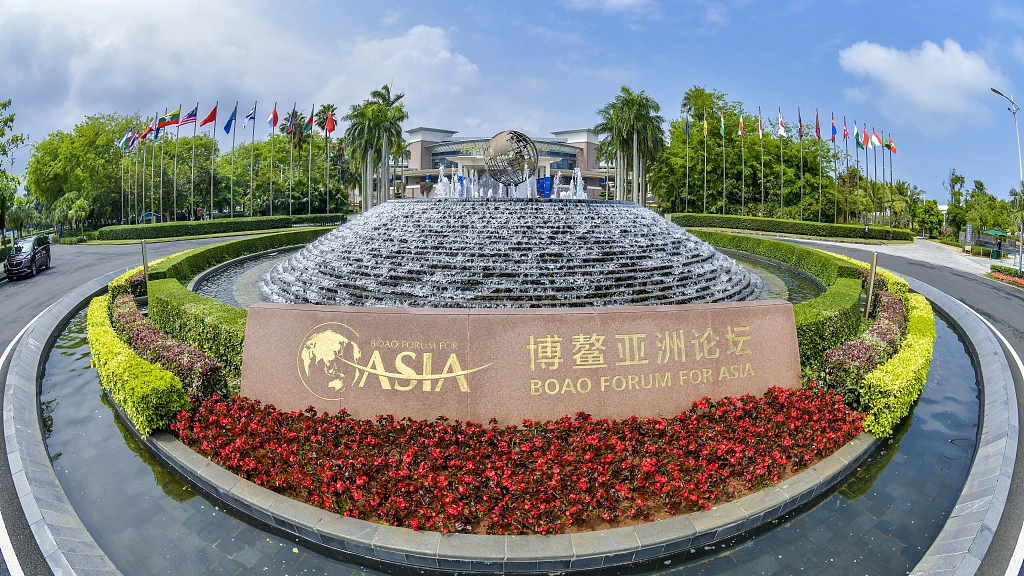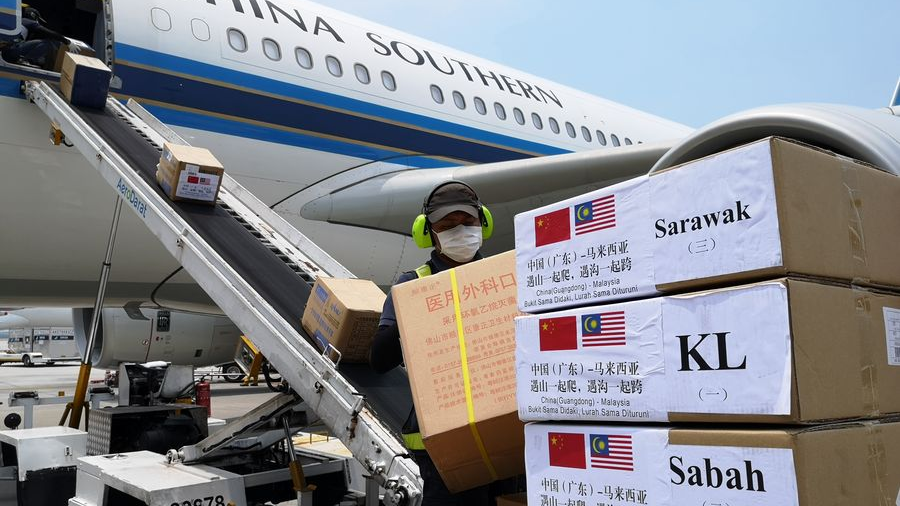
The International Convention Center of the Boao Forum for Asia in Qionghai City, China's southernmost Hainan Province. /CFP
The International Convention Center of the Boao Forum for Asia in Qionghai City, China's southernmost Hainan Province. /CFP
Editor's note: Stephen Ndegwa is a Nairobi-based communication expert, lecturer-scholar at the United States International University-Africa, author and international affairs columnist. The article reflects the author's opinions and not necessarily the views of CGTN.
China is yet again hosting the annual conference of the Boao Forum for Asia (BFA) (April 20-22) from where it all started in February 2001 in south China's Hainan Province. The theme of the forum will be "The World in COVID-19 & Beyond: Working Together for Global Development and Shared Future."
It is an ideal focus for the annual event as the world struggles to recover after a couple of years of wobbling under the weight of the negative impact of the coronavirus pandemic. While it is appreciated that not all countries were affected in the same way, no single country can claim immunity from these ramifications.
According to the International Monetary Fund's (IMF) World Economic Update published in January, the global economy is expected to shrink from 5.9 percent in 2021 to 4.4 percent in 2022. This slump was unexpected, a development the IMF attributes to the Omicron COVID-19 variant that spread around the world in 2021 and 2022 leading to a "disrupted recovery and higher inflation."
The World Bank's Global economic forecast for 2022 also paints a dismal picture as a result of slowing growth and rising risks. In addition to COVID-19, the World Bank also cites other challenges facing the global economy, including climate change and growing inequality.
The BFA includes all major Asian economies. With the Asian continent emerging as the frontier of global growth, the Boao forum is a good barometer of both the economic challenges and prospects facing the world. China, the second largest economy, is the dipstick that measures the possibilities of economic recovery and the level of success of policy development and implementation in global recovery efforts.
It's expected that the BFA will come up with measures and policy proposals to counter the impact of COVID-19 and boost the recovery and growth of trade and consumption. Further, the forum should consider ways of closing the widening income gap between the rich and the poor, an increasingly unsustainable situation exacerbated by the pandemic. Generally, the poorest half of the global population owns just two percent of the global wealth, while the richest 10 percent own 76 percent of all wealth. Add COVID-19 into this equation and a picture of hopelessness emerges, with an equally treacherous road to recovery.

Medical supplies brought by an anti-COVID-19 medical team from China are unloaded at Kuala Lumpur International Airport in Sepang, Selangor, Malaysia, April 18, 2020. /Chinese Embassy in Malaysia
Medical supplies brought by an anti-COVID-19 medical team from China are unloaded at Kuala Lumpur International Airport in Sepang, Selangor, Malaysia, April 18, 2020. /Chinese Embassy in Malaysia
Income inequality is rooted deep in the economic structures of countries suffering from the malaise. In this inverted pyramid, a few high-worth sectors generate a lot of wealth for a few. The vast majority, the so-called working class, are trapped in low-income sectors. Again, using China as the benchmark, the BFA can discuss and suggest relief policies for the sectors not only hard hit by the pandemic, but ways of transforming traditionally low-income generators as well.
China has shown that Asia can and should partner with Africa economically using paradigms that are more practical and sustainable. Rather than give direct aid, development partners achieve more when they invest directly into various projects using models like public-private partnerships, co-ownership or concessionary loans.
A few case studies will suffice. The soon-to-be opened iconic Nairobi Expressway in Kenya's capital will change the fortunes of thousands of businessmen who are usually trapped in traffic snarl ups for hours almost on a daily basis. Constructed on a Built-Operate-Transfer model, the road will in the medium term lead to an estimated 25 percent reduction in the cost of doing business through the massive lessening of unproductive man-hours and fuel currently spent on the road.
In Ghana, China has supported the Ghanaian government's technical and vocational education transformation agenda through the rehabilitation and modernization of 23 vocational institutions. These institutions will upscale the abilities and skills of technical workers in Ghana to support and promote the country's economic and social development.
Such examples of localized economic activities in developing countries ought to be replicated in many locations as per an area's competitive advantage. Also not to be ignored or underestimated are efforts in environmental conservation, particularly fighting climate change through establishing effective mitigation and adaptation strategies that will support and enhance economic development.
In 2020, China declared full victory in eradicating absolute poverty, acting both as an inspiration and challenge to the developing world. The country is now working toward establishing a modern socialist society across the board by enhancing common prosperity through not only taxing the wealthy, but also directing more resources to rural areas and low income groups. The world awaits the BFA outcomes, hoping that Asia will now purpose to play a more central role in post-pandemic global economic recovery and development initiatives.
(If you want to contribute and have specific expertise, please contact us at opinions@cgtn.com. Follow @thouse_opinions on Twitter to discover the latest commentaries on CGTN Opinion Section.)

